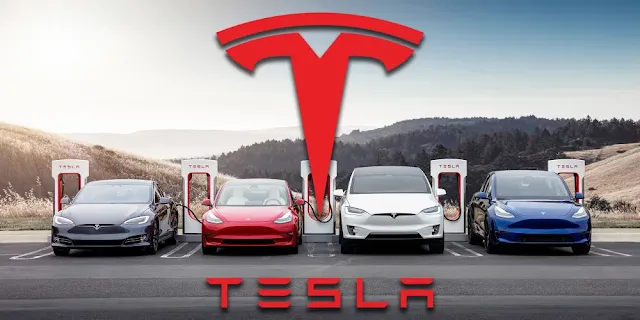The Genius
Elon Musk (born June 28, 1971, in Pretoria, South Africa) is a South African-born American entrepreneur who co-founded PayPal and established SpaceX, a launch vehicle and spaceship manufacturer. He was also one of the original major investors and the CEO of Tesla, an electric car company.

- Early years?
- SpaceX and PayPal
- Tesla
Early Years
Musk was born in Canada to a Canadian mother and a South African father. He showed an early aptitude for computers and business. He produced a video game at the age of 12 and sold it to a computer magazine. Musk left South Africa in 1988 after getting a Canadian passport because he refused to support apartheid through compulsory military duty and wanted to pursue the higher economic prospects offered in the United States.
SpaceX And PayPal
Musk began his education at Queen's University in Kingston, Ontario, before transferring to the University of Pennsylvania in Philadelphia in 1992 and receiving a bachelor's degree in physics and economics in 1997. He enrolled in physics graduate school at Stanford University in California, but he dropped out after only two days, believing that the Internet had far more potential to revolutionize society than physics. Zip2, a startup that provides maps and business directories to online newspapers, was started by him in 1995. After Zip2 was purchased by computer manufacturer Compaq for $307 million in 1999, Musk launched X.com, which later became PayPal, an online financial services company specializing in online money transfers. PayPal was purchased for $1.5 billion in 2002 by the online auction site eBay.
Musk has long believed that mankind must evolve into a multiplanet species to survive. He was, however, concerned with the high cost of rocket launchers. He founded Space Exploration Technologies (SpaceX) in 2002 to make more economical rockets. The Falcon 1 (first launched in 2006) and the bigger Falcon 9 (first launched in 2010) were the company's first two rockets, both planned to be substantially less expensive than rival rockets.
The Falcon Heavy (first launched in 2018) was designed to carry 117,000 pounds (53,000 kg) to orbit, roughly twice as much as its closest competitor, the Boeing Company's Delta IV Heavy, at a third of the price. The successor to the Falcon 9 and the Falcon Heavy has been announced by SpaceX: the Super Heavy–Starship system.
The first stage of the Super Heavy rocket would be capable of lifting 100,000 kg (220,000 pounds) into low Earth orbit. The payload would be the Starship, a spacecraft meant to transport people and cargo between cities on Earth while also establishing bases on the Moon and Mars. The Dragon spacecraft, which transports supplies to the International Space Station, was also developed by SpaceX. (ISS). The dragon can carry up to seven astronauts, and in 2020, it flew astronauts Doug Hurley and Robert Behnken to the International Space Station.
Musk aimed to lower space travel costs by constructing a reusable rocket that could take off and land on the same launch pad. SpaceX's Grasshopper rocket completed numerous brief flights to test such technology beginning in 2012. In addition to being CEO of SpaceX, Musk was also a chief designer in building the Falcon rockets, Dragon, and Grasshopper.
Tesla
Musk has long been fascinated by the potential of electric vehicles, and in 2004 he became one of the primary investors in Tesla Motors (later renamed Tesla), an electric vehicle startup created by entrepreneurs Martin Eberhard and Marc Tarpenning. Tesla debuted its first automobile, the Roadster, in 2006, with a range of 245 miles (394 kilometers) on a single charge.
It was a sports car that could travel from 0 to 60 miles per hour (97 kilometers per hour) in less than four seconds, unlike most earlier electric vehicles, which Musk considered stodgy and uninspiring. The company's first public offering (IPO) in 2010 raised $226 million. Tesla released the Model S sedan two years later, which received critical acclaim for its performance and design. The Model X premium SUV, which debuted in 2015, earned the brand even more praise. In 2017, the manufacture of the Model 3, a less-priced vehicle, began.
Musk has expressed qualms about Tesla being publicly listed, and in August 2018, he tweeted that he had "got funds" to take the firm private. The Securities and Exchange Commission (SEC) sued Musk for securities fraud the following month, stating that his tweets were "false and misleading." Tesla's board of directors rejected the SEC's proposed settlement shortly after, purportedly because Musk had threatened to resign. Tesla's stock, however, plummeted as a result of the revelation, and a tougher deal was eventually approved. Musk was required to step down as chairman for three years, but he was permitted to keep his position as CEO.
Dissatisfied with the estimated cost of a high-speed rail system in California ($68 billion), Musk proposed the Hyperloop in 2013, a pneumatic tube in which a pod carrying 28 passengers would travel 350 miles (560 kilometers) between Los Angeles and San Francisco in 35 minutes at a top speed of 760 miles (1,220 kilometers per hour, nearly the speed of sound. Musk said that the Hyperloop will cost under $6 billion and that the system could accommodate the six million people that travel that route each year, with pods departing every two minutes on average. However, he indicated that he could not commit time to the Hyperloop's development due to his responsibilities as CEO of SpaceX and Tesla.






